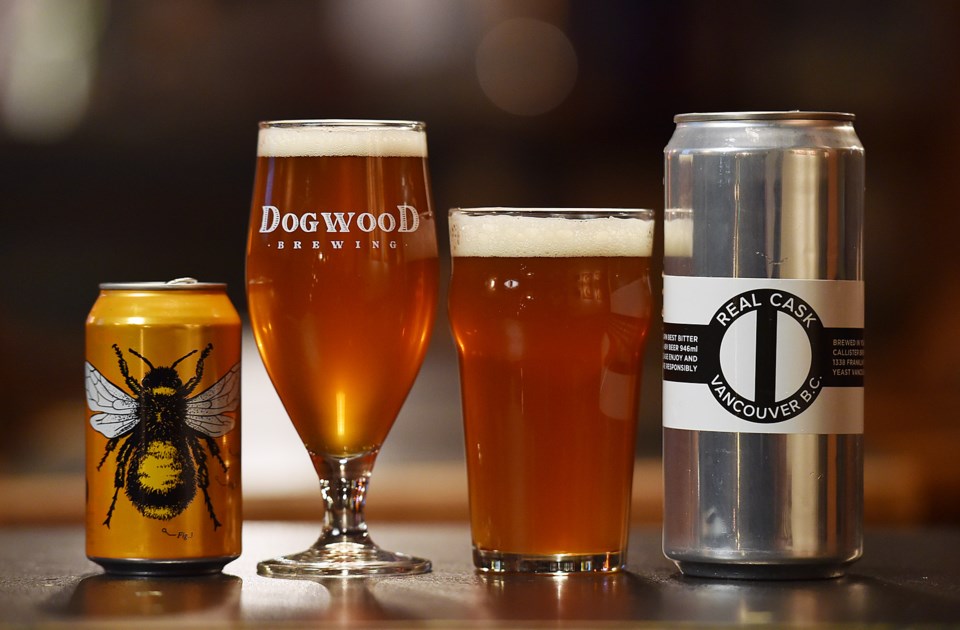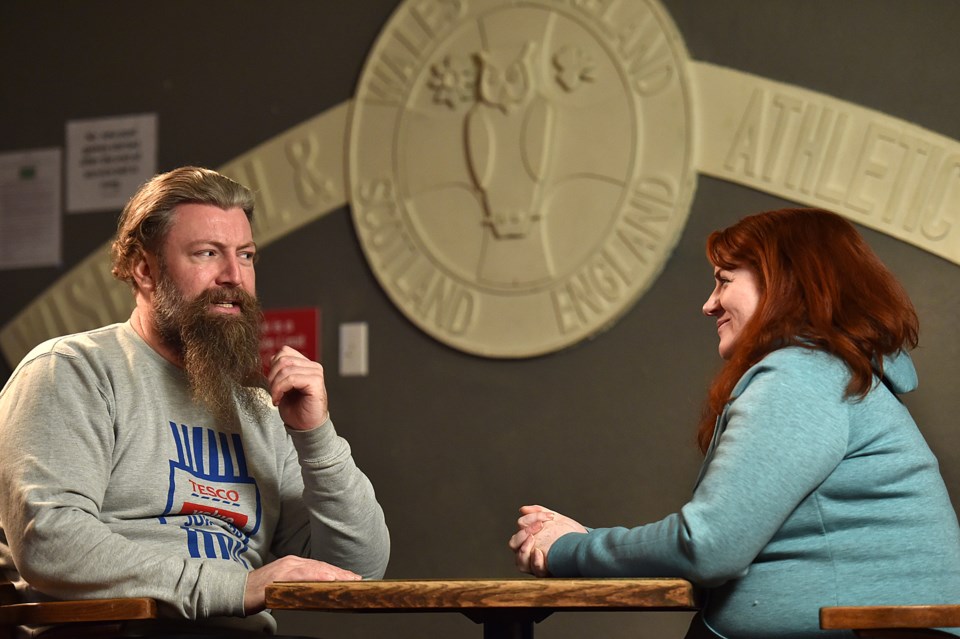When it comes to the great beer styles of the world, it seems like the real ales of the British Isles just canât get any respect. Adoration for Belgian, German and North American styles is near universal. The Belgians are masters of flavourful yeast-forward beers. The Germans gave us crisp, clean lagers you can drink forever. Meanwhile, the American craft brewers (and to a lesser extent, our Canadian breweries) introduced the world to big, bold hop-forward beers and a penchant for experimentation.
But the British? Often their beers are the subject of ridicule and scorn: Theyâre boring! Theyâre flat! Theyâre weak! Theyâre warm!
Well, if thatâs an opinion you happen share, youâre just plain wrong.
Boring? Try subtle and delicate. Flat? Real ales are cask-conditioned, meaning they arenât artificially pumped full of carbon dioxide, and wonât leave you bloated as a result. Weak? British beers are designed to be âmoreish,â so you can spend hours upon hours down at the pub draining pints. Warm? Cellar temperature is not warm, and these ales lose all their complexity at the icy cold temperatures reserved for tasteless lagers.
In fact, the staples of many North American craft breweries can trace their lineage to Mother England, particularly pale ales, IPAs, stouts and porters. The Canadian beer drinking public may be slow to embrace more traditional examples of these styles, but brewers Adam Chatburn of Real Cask Ales and Claire Wilson of Dogwood Brewing think we are all missing out (and I happen to agree).
Few other brewers in B.C. are as qualified as these two to discuss the beauty of the British ale. Originally from Blackburn, England, Chatburn first learned how to brew at Blackburn Brewing Company before emigrating to Canada. His frustration with the lack of real ales available in B.C. led him to start his own brewery, Real Cask Ales, part of the Callister Brewing collective.
Wilson was born and raised in Galway, Ireland and she, too, learned to brew in England. While Dogwoodâs beers have a definite B.C.-focus in ingredients and flavours, sheâs never forgotten her roots.
I gathered the pair of expats at East Vancouverâs WISE Hall (as in Wales, Ireland, Scotland and England) to get the lowdown on the misunderstood ales of Britain.

Ìý
The Growler: Tell me a bit about what differentiates British brewing from, say, Belgian or German brewing? What makes it stand out and what makes it unique?
Adam Chatburn: Well, there was a chunk of German brewing that was stolen from the British brewing and thereâs been a lot of cross-pollination over the years, even going back even a hundred years. Beers like the alts and the darker German beers were mostly porters and stouts originally, that were taken over there. But at the same time, British beers never had hops, that was a German thing. So we took the hops and planted our own varieties. Without the Germans we wouldnât have hops, and without us they wouldnât have their darker beers.
Claire Wilson: The strongest commonality between them is the respect for traditions. And each country has its own traditions. And thatâs the main difference between Britain and these other schools of brewing thought, is the respect for British traditions, for the real ales, the bottle- and cask-carbonated beers. That is quintessentially the English style of beer. And itâs taken very seriously.
Chatburn: Itâs true. The English style of drinker, if itâs a cloudy pint, if itâs got too much head, or if thereâs anything wrong with it, theyâll complain, quite audibly. Itâs a combination of educated consumers and being moaning British bastards.
Wilson: Itâs the respect for tradition and the respect for holding on to these things. But it can limit you as a brewer. When you come from a very traditional British school of training, there are some things you just donât do. When I first came here, I was like, whatâs with all these beers? Why are people putting these weird ingredients in their beer? You canât do that!
Chatburn: This idea about looking back, and tradition, and making sure to hold on to that and not lose it, itâs important because a lot of styles have already been lost. But it can also be, in a way, a bit of a prison, it can stifle creativity. And this is true in Belgium and Germany, too. These places with strong traditions, people are very stuck to those and tied to those rules. Coming to Canadaâwe both got here about the same time, 10 years agoâyou can see those rules are out of the window.
Wilson: Itâs funny, because traditional IPAs, like Deuchars and stuff, taste nothing like IPAs here. It went to North America, evolved into something else, and came back as this fully-formed beast.
Chatburn: Itâs such a loaded term now, IPA. I could stamp my feet and say Flowers IPA at 3.8% is the quintessential IPA, but now itâs become such a byword for so many types of beer. Here in B.C., if you have something on your board thatâs an IPA, thatâs the one thatâs going to sell the most, end of story. So itâs very likely that brewers will stick âIPAâ on something to bump up sales.
Ìý
Growler: What is it that characterizes British beer, what sets it apart from other styles?
Chatburn: In one word: sessionability. Thatâs the key thing with the British palate. Itâs that idea that you can sit there at the pub for seven or eight hours, read the paper, have some dinner, and you will have six, or seven, or eight, or nine pints over the course of that period. And your palate will not be blown out by it. Youâll be buzzed, but you wonât necessarily be falling down as if youâd had seven or eight Fat Tugs.
Wilson: And you drink the same beer the whole time. Itâs delicious, so you have another one, and another one. And you never get the feeling like you need something else.
Chatburn: Very often the finishing gravity tends to be a bit higher, so thereâs a that ever-so-slightly sweet finishâbut not sickly sweetâthat makes you want to have another.
Wilson: And thatâs not something a lot of Â鶹´«Ã½Ó³»craft beer drinkers are looking for. They want their palates blown out. They want to taste something theyâve never tasted before. British beer is beer thatâs made to drink, as opposed to beer thatâs meant to just be tasted.
Ìý
Growler: So how do you adapt that brewing philosophy to the B.C. market?
Chatburn: I do some beers that are 100% Adam, and some beers that arenât Adam at all! I will always have a mild or a bitter on the tap, but Iâll also just finished a West Coast double IPA.
Ìý
Growler: Why we donât see a lot of proper cask ales here in North America? Especially here in B.C., there are not a lot of people doing them.
Wilson: One of the biggest differences is that bars in Britain have cellars, and lines, and engines. They have the infrastructure. The staff is trained, they know what theyâre talking about, they know how to take care of it, so theyâre ready to buy it. Whereas if you try to sell a cask to someone here, you have to supply them with an engine, a fridge to put it in, you have to train their staffâ¦
Chatburn: Iâve had more then a few people whoâve said, âWe want to have your casks,â but I have to go to them and be like, whatâs your cellar situation? Howâs your engine? Do you actually take care of the casks? Are you going to have a cleaning regimen? So there are all these questions and if you answer no to any of these, I have to walk away. It requires so much work to get it right, and if I donât think youâre going to do that, then itâs going to effect how my product hits the public.
Ìý
Ìý



